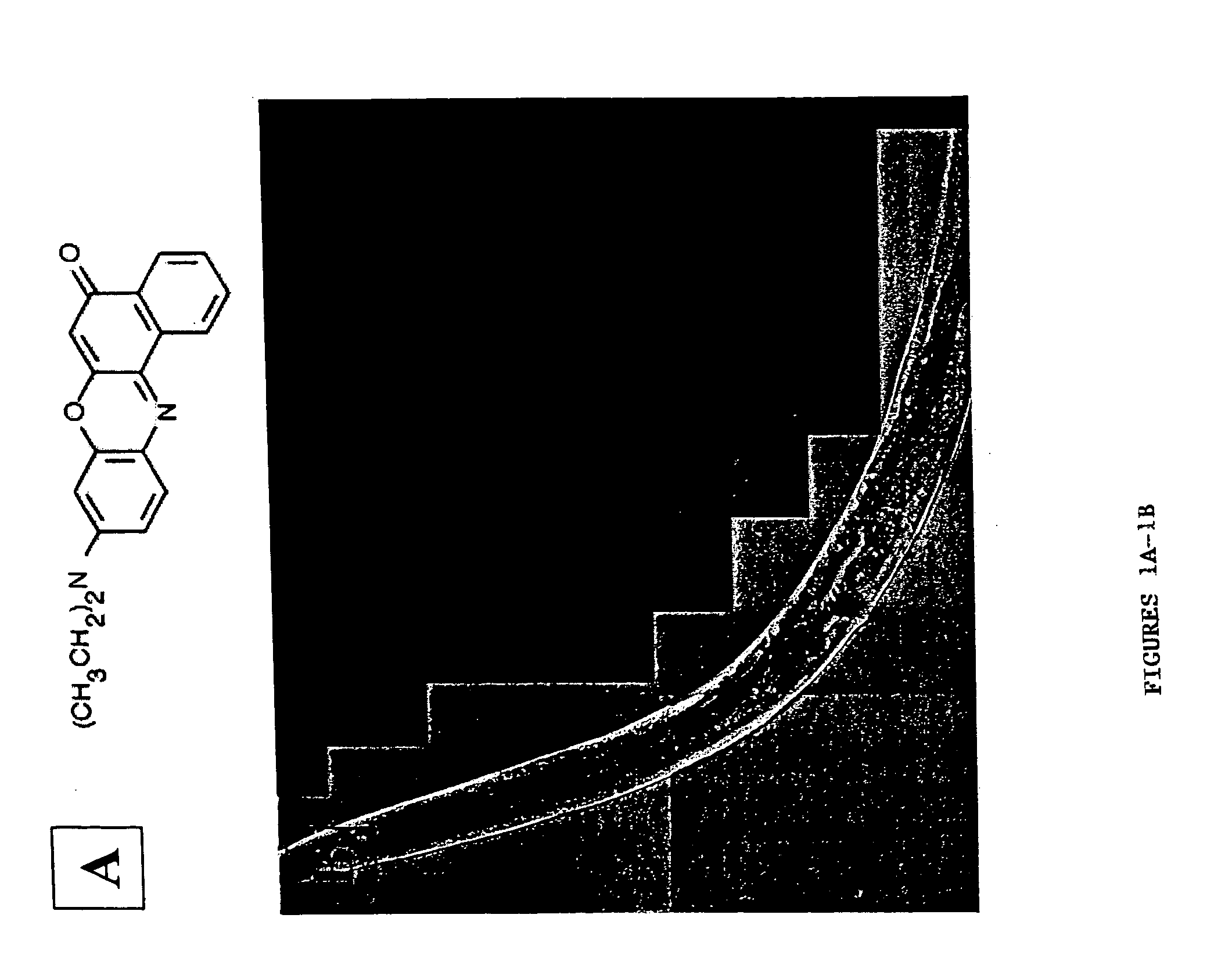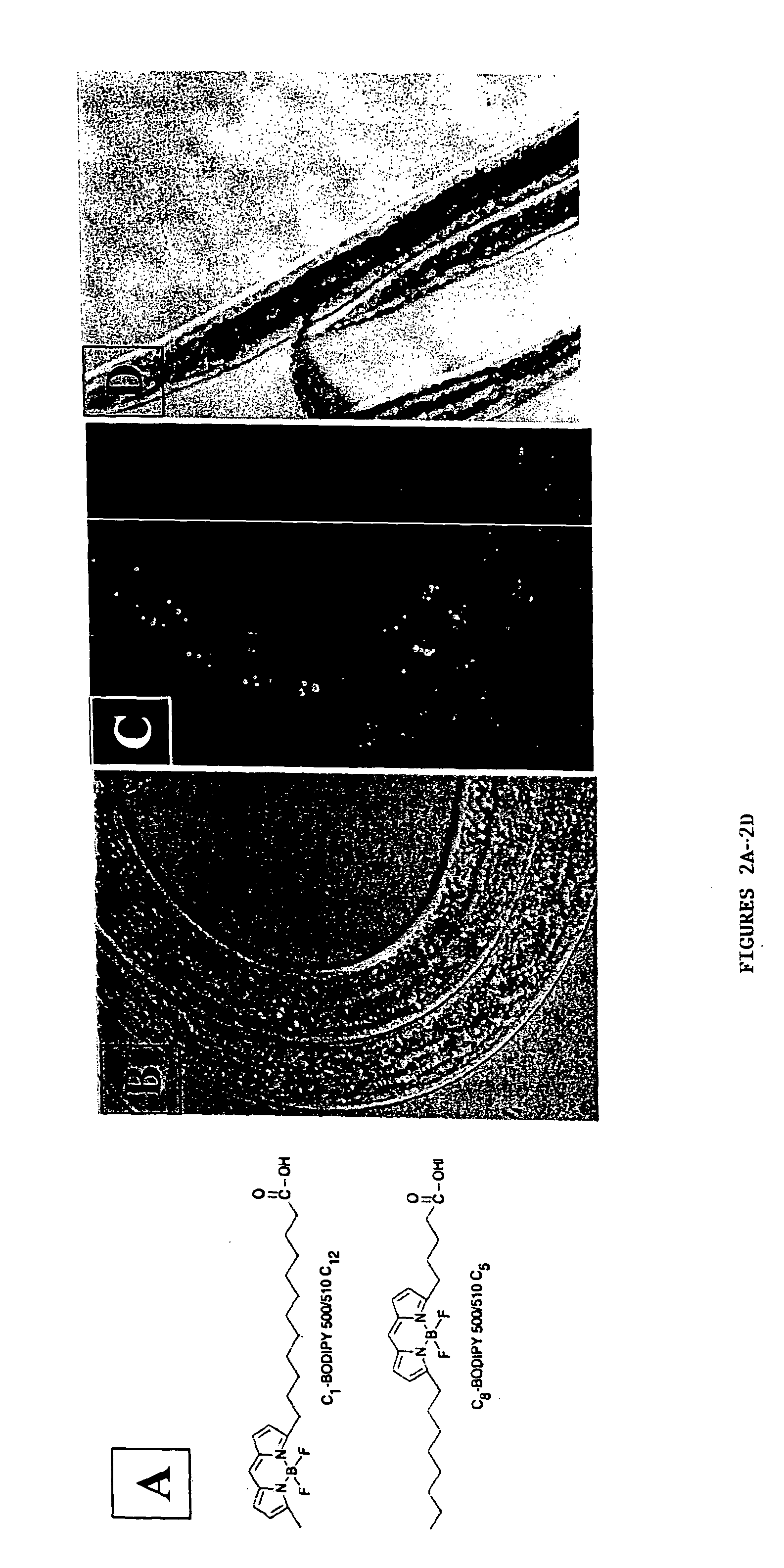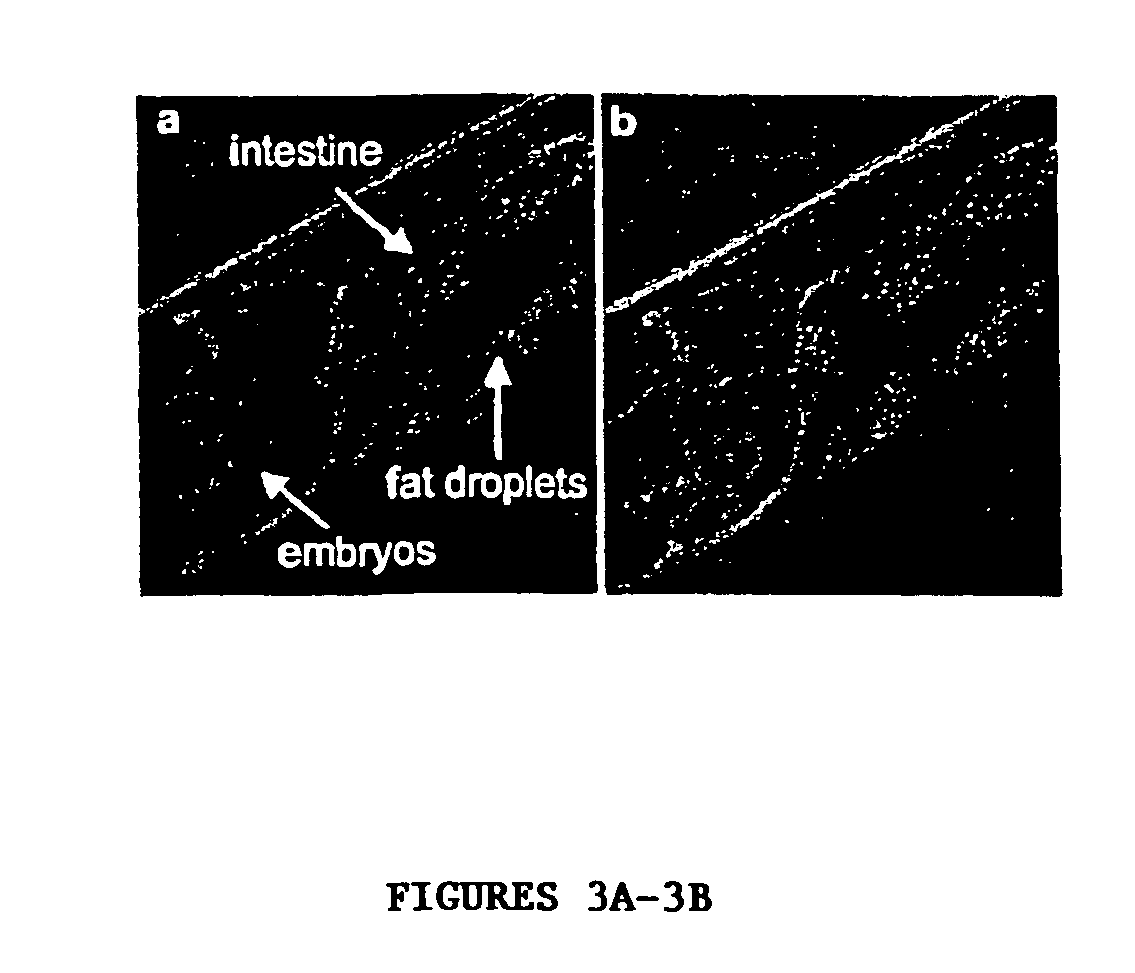Polynucleotide and polypeptide fat metabolism regulators and uses thereof
a polypeptide and fat metabolism technology, applied in the field of polypeptide and polypeptide fat metabolism regulators, can solve the problems of reducing the number of peptides in the body, the inability to assign a function, and the inability to regulate the global fat metabolism regulator, so as to achieve the effect of reducing the number of peptides
- Summary
- Abstract
- Description
- Claims
- Application Information
AI Technical Summary
Benefits of technology
Problems solved by technology
Method used
Image
Examples
Embodiment Construction
[0122] The present invention features C. elegans fat metabolism regulator genes and polypeptides. Mammalian orthologs of these C. elegans genes have also been identified. Because pathways that regulate fat cell biology are likely to be evolutionarily conserved between mammals and nematodes, these mammalian genes provide new targets for the treatment of obesity and obesity-related disease, and the invention also features such methods.
[0123] As reported in more detail below, a systematic survey of the C. elegans genome using RNAi has identified nematode (and mammalian) genes that regulate fat storage. These fat metabolism regulator genes have been characterized in C. elegans and found to define two sets. A first set of fat metabolism regulator genes was defined by those whose inactivation caused a reduced fat (50% or less of wild-type fat level) or altered fat deposition phenotype. A large subset of these fat metabolism regulator genes included those whose inactivation did not result ...
PUM
| Property | Measurement | Unit |
|---|---|---|
| temperatures | aaaaa | aaaaa |
| temperatures | aaaaa | aaaaa |
| temperatures | aaaaa | aaaaa |
Abstract
Description
Claims
Application Information
 Login to View More
Login to View More - R&D
- Intellectual Property
- Life Sciences
- Materials
- Tech Scout
- Unparalleled Data Quality
- Higher Quality Content
- 60% Fewer Hallucinations
Browse by: Latest US Patents, China's latest patents, Technical Efficacy Thesaurus, Application Domain, Technology Topic, Popular Technical Reports.
© 2025 PatSnap. All rights reserved.Legal|Privacy policy|Modern Slavery Act Transparency Statement|Sitemap|About US| Contact US: help@patsnap.com



